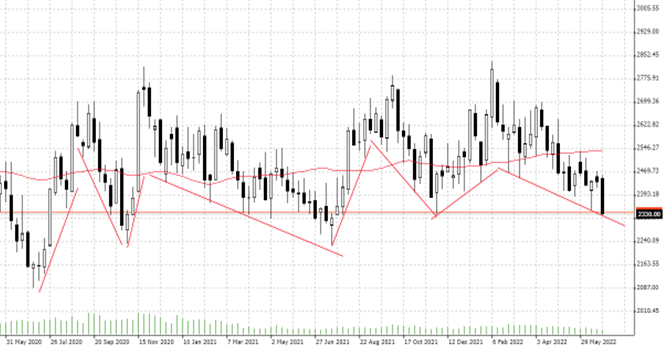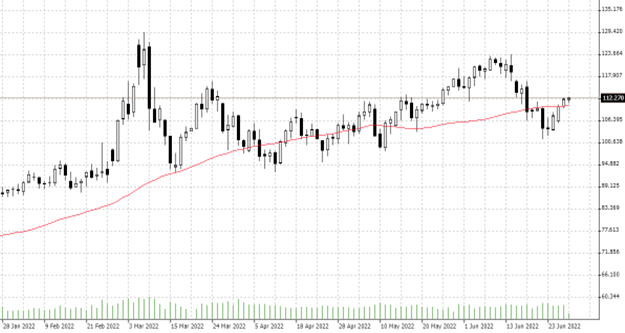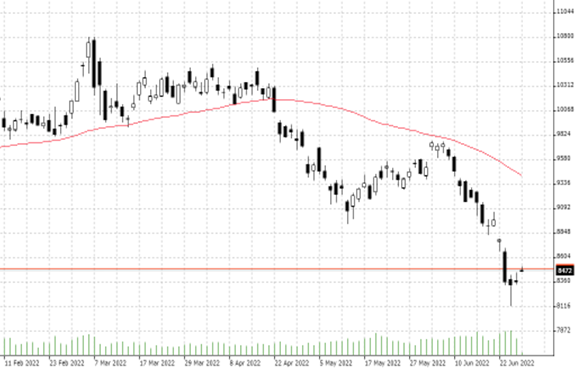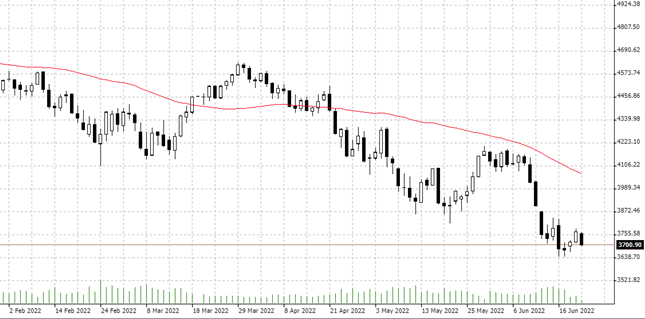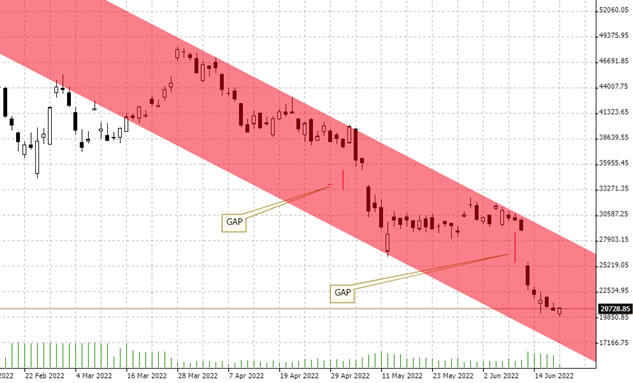

04.07.2022 – Wall Street closed the worst first half of the year in decades. Adjusted for inflation, it was even the biggest loss since 1872. A bad omen: this year marked the fall into the so-called Long Depression – also known as the Founders’ Crash.
What a first half of the year: the S&P 500 lost about 20 percent – the worst since 1970. It almost broke the then all-time record of minus 21 percent in the first half of the year. Pictured is the daily chart of the SPX showing the 50-day moving average.

Source: Bernstein Bank GmbH
The Nasdaq Composite posted its biggest drop ever, losing 29.5 percent. The Dow Jones slid 15.3 percent to its worst level since 1962.
The biggest loss since 1872
But it gets worse: Michael Hartnett, chief investment strategist at Bank of America Securities, adjusted the S&P 500’s absolute numbers for inflation. The nominal dollar losses get even bigger when the shrinkage of dollar purchasing power is factored in. And so Hartnett concludes that U.S. stocks are having their worst year since 1872. The situation looks just as bad for bonds: For Hartnett, 2022 is the worst year so far since 1865, with a 15.4 percent drop, and the year-over-year loss is double that. And that’s without inflation adjustment, because that doesn’t work when comparing to various other currencies.
Boom of the founding era
The annual figures should make us sit up and take notice. At the time, the U.S. was recovering from the Civil War and was using government money to drive the railroad conquest of the West, in part to reunite the fractured country. This led to over-expansion and a speculative bubble in the U.S. economy. In Europe, the parallel victory of the German Empire over France, with its reparations, had led to the euphoric and speculative boom of the Founding Era.
The Long Depression
The Gründerkrach was also triggered by the end of the silver standard in Germany: the Reich stopped the production of silver talers and introduced the gold standard. The U.S. also took this step, hitting the mines in Nevada in particular. De facto, this created a deflationary shortage of money, and the silver decision went down in history as “The Crime of 1873” – forcing the Panic of 1873. By 1879, the Depression was raging, even surpassing the duration of the Crash of 1929, according to the National Bureau of Economic Research. The crisis is also known as the Long Depression – some researchers even date it to 1896. Ten U.S. states, 89 railroads, hundreds of banks and 18,000 companies went bankrupt in the U.S. alone.
Acute risk of recession
If we look again at the current situation, there are some deflation signals. For example, the Federal Reserve Bank of Atlanta’s economic tracker slipped to minus 2.1 on Friday. Bank of America lowered its GDP forecast to zero. Zero interest rate policy and Corona supports have provided a flood of fresh and cheap money in recent years – which triggered a boom on credit. Now, the energy transition and the Ukraine war are driving prices even higher. In addition, the central banks are tightening the supply of cheap money again as a result of the interest rate turnaround. The question is when high inflation will choke off the economy and tip over into a deflationary recession.
Our conclusion: if history repeats itself, the crash in stock prices has just begun. So watch out for the recession signals – Bernstein Bank wishes you good luck with your trades and investments!
Important Notes on This Publication:
The content of this publication is for general information purposes only. In this context, it is neither an individual investment recommendation or advice nor an offer to purchase or sell securities or other financial products. The content in question and all the information contained therein do not in any way replace individual investor- or investment-oriented advice. No reliable forecast or indication for the future is possible with respect to any presentation or information on the present or past performance of the relevant underlying assets. All information and data presented in this publication are based on reliable sources. However, Bernstein Bank does not guarantee that the information and data contained in this publication is up-to-date, correct and complete. Securities traded on the financial markets are subject to price fluctuations. A contract for difference (CFD) is also a financial instrument with leverage effect. Against this backdrop, CFD trading involves a high risk up to the point of total loss and may not be suitable for all investors. Therefore, make sure that you have fully understood all the correlating risks. If necessary, ask for independent advice. CFDs are complex instruments and are associated with the high risk of losing money quickly because of the leverage effect. 68% of retail investor accounts lose money trading CFD with this provider. You should consider whether you understand how CFD work and whether you can afford to take the high risk of losing your money.7


